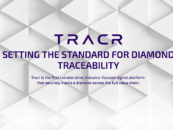Europe’s digital euro project is moving to its next stage of development and entering the preparation phase.
This new phase will seek to establish the foundations for the potential issuance of a central bank digital currency (CBDC) with works to include finalizing the rulebook, and selecting providers to develop the platform and infrastructure, the Governing Council of the European Central Bank (ECB), announced on October 18, 2023.
The preparation phase, which started on November 01, 2023, will initially last two years and will lay the groundwork for the potential creation of a digital version of the euro. The stage will include drafting regulations, standards and procedures for the digital euro, as well as choosing the providers in charge of developing the technology. It will also include the testing and experimentation of the CBCD.
Improved efficiency and increased innovation
The Eurosystem, the monetary authority of the eurozone comprising the ECB and the central banks of the member states part of the euro area, has been working on the digital euro project since 2021.
Although the initiative has so far remained rather investigative and experimental, the authority believes the introduction of a digital form of the sovereign currency could enhance the efficiency of payment systems, help address issues related to financial inclusion, and, above all, ensure that central banks remain relevant in the digital era.
If a digital euro were to be issued, the CBDC would essentially be a digital version of cash – a currency and payment method that would be widely accessible, free for basic use, and backed by the ECB the same way physical banknotes and coins are, the Eurosystem says.
The digital euro would be usable for all digital payments throughout the euro area, whether online or offline, acting as a pan-European payment solution for the eurozone under European governance. It would allow users to settle payments instantly in CBDC, and would be usable in a peer-to-peer fashion, at the point of sale, in e-commerce and for government transactions.
The technology would also provide a platform on which supervised entities could build pan-European services, fostering thus innovation and and reducing costs.
The digital euro would rely on its own infrastructure and would be developed with data protection in mind, the Eurosystem says. For offline payments, the CBDC would deliver a cash-like level of privacy. For online payments, the authority says it would not be able to see users’ personal data or link payment information.
Distribution of the digital euro
Looking at distribution models, the Eurosystem envisions for the digital euro to be accessible via the proprietary apps and online interfaces of payment service providers.
Authorized payment service providers in the bloc would be required to offer basic digital euro services, including onboarding and offboarding, account linkage, funding and transaction initiation.
The digital euro would also be accessible via a dedicated app provided by the Eurosystem.
People without a bank account or a digital device would be able to issue the digital euro, by using, for instance, a card provided by a public body such as a post office. Users would also be able to exchange digital euro for cash or vice verse at cash machines.
To encourage usage and distribution, the Eurosystem said it would put forward a compensation model to create incentives for banks and payment service providers to distribute the digital euro and to ensure that payments using the CBDC are free of charge and widely accepted across the euro area.
Findings of the investigation phase
The move of the digital euro project towards the development phase follows the completion of the first phase called the investigation phase.
Launched in October 2021, this phase focused on determining the most appropriate design features of the digital euro to meet the Eurosystem’s objectives and ensure smooth integration into the financial ecosystem and payments landscape.
Findings from this phase, which are detailed in a report titled “A stocktake on the digital euro: Summary report on the investigation phase and outlook on the next phase”, reveal that the motivations for the issuance of a digital euro are still as relevant as ever, and that a CBDC could potentially support competition, digitalization and innovation, strengthen European strategic autonomy and enhance the resilience of the bloc’s payments system.
The investigation phase has also demonstrated from a product design and distribution perspective that it would be possible to develop a digital euro that meets users’ needs and the Eurosystem’s requirements.
Moving forward
Although the Eurosystem is moving forward with its digital euro efforts, the authority stresses that no definitive decision has so far been made as to whether or not the bloc will be issuing a CBDC.
That decision will only be considered by the ECB’s Governing Council once the legislative framework for the digital euro has been adopted by the European Parliament and Council, it says.
In June 2023, the European Commission put forward a legislative proposal on the possible digital euro. The draft digital euro regulation proposes, among others, to grant legal tender status to the digital form of the currency. It also includes the provision that people would be able to get the CBDC through their bank on request, and that basic digital euro services would be free of charge of end-users.
Featured image credit: edited from freepik






